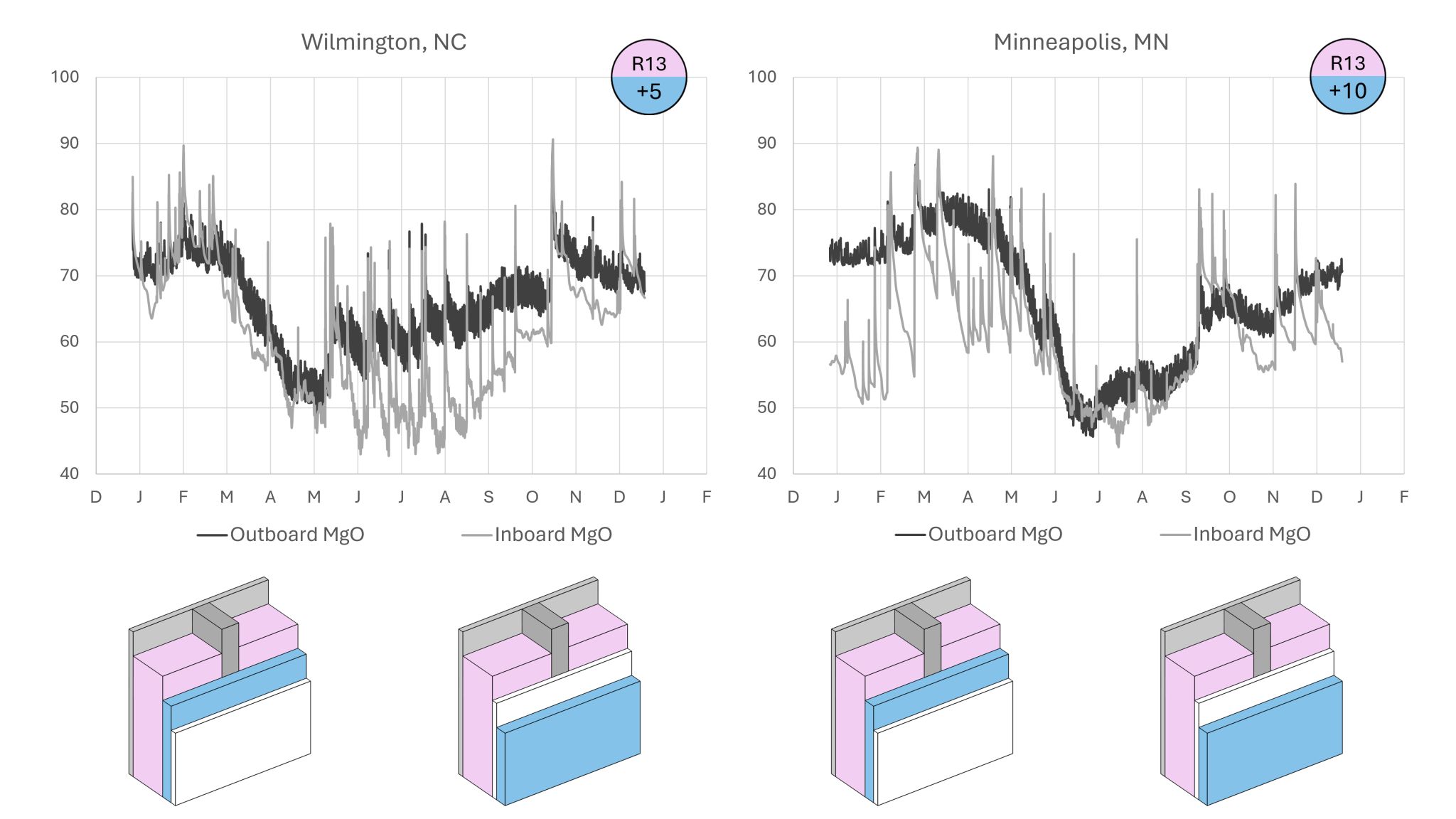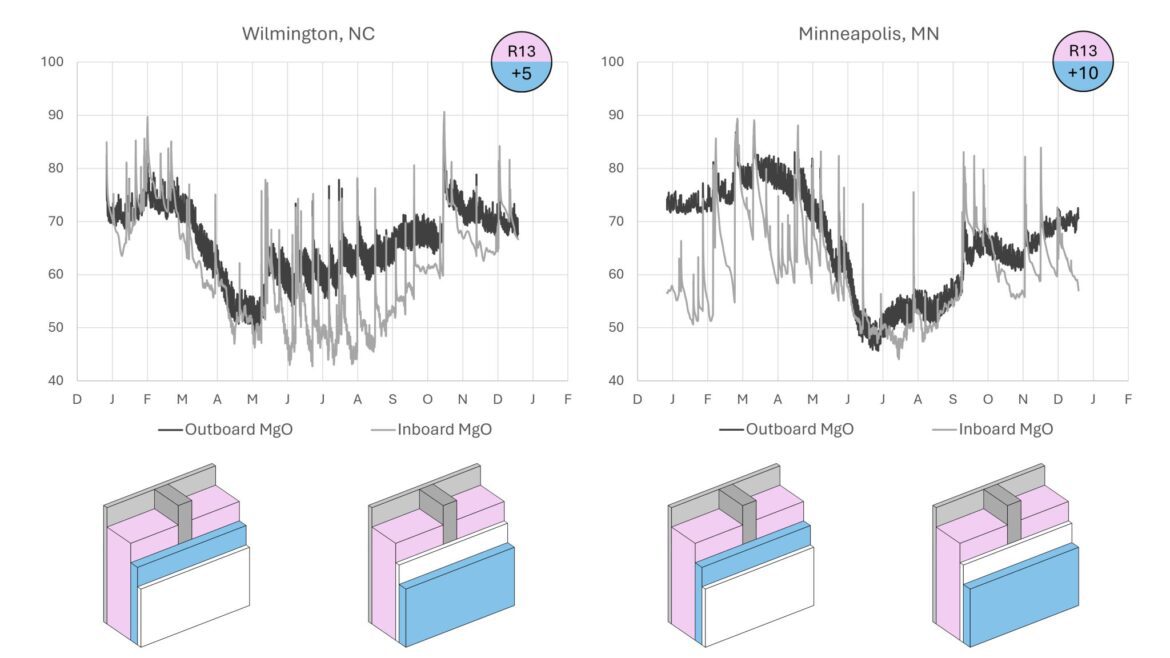Tags: buildingcodes buildingenvelopes evaluationreports insulation magnesiumoxide mgo waterpenetration

Here, I show moisture levels (RH) at the exterior face of ½” MgO sheathing when installed either outboard or inboard of exterior insulation (XPS). The stud cavity is R13 with either +5 or +10 corresponding to Climate Zone 3 (Wilmington, NC) or Climate Zone 6 (Minneapolis, MN), respectively. The WRB is a permeable polyolefin sheet and I’ve configured both assembly types with a ventilated 10 mm rainscreen cavity. A wind-driven rain load of 1% is placed on the WRB.
With the outboard approach, the WRB interfaces with the rainscreen cavity, allowing the rainscreen cavity to do what it does – facilitate drying. This is also ideal when using MgO as a structural fastener-base. When the MgO is moved inboard of the insulation, we see that moisture levels fluctuate a bit more – the highs are a little higher, the lows a little lower. This is to be expected when separating the sheathing from its rainscreen cavity – a quintessential dilemma with both benefits and potential pitfalls.
I prefer the outboard approach for the reasons mentioned and for the fact that fewer fasteners penetrate the WRB. Still, I can live with either approach. The key to making these hybrid walls work is designing with the correct ratio (outboard to inboard), something that prescriptive approaches got wrong. It works here, but often the design begs for more outboard insulation, especially in cold climates.
